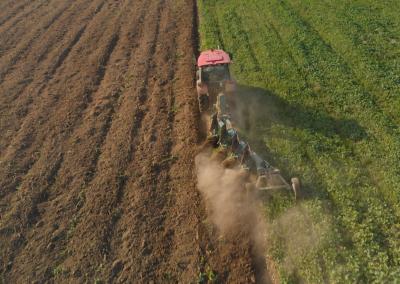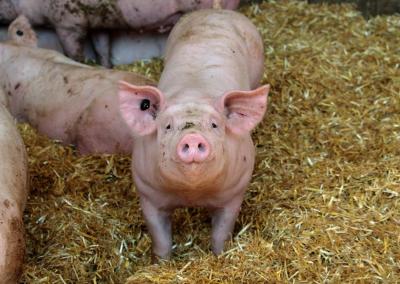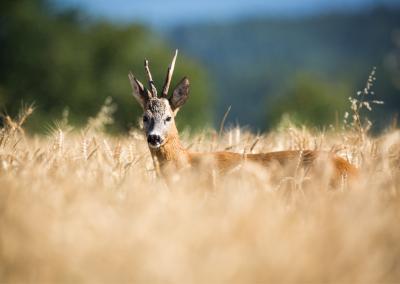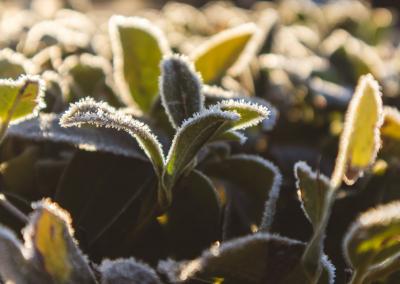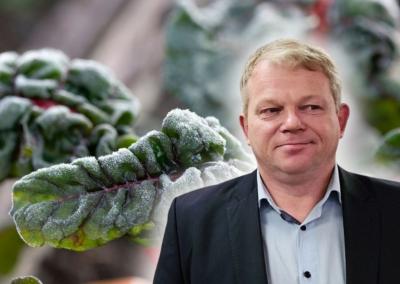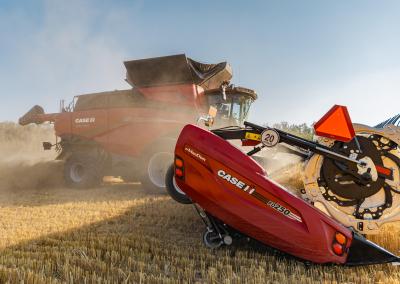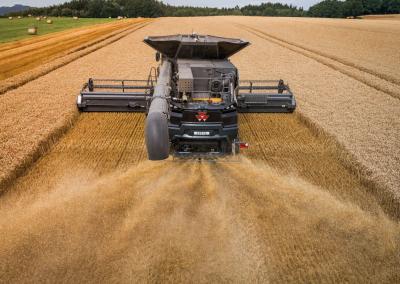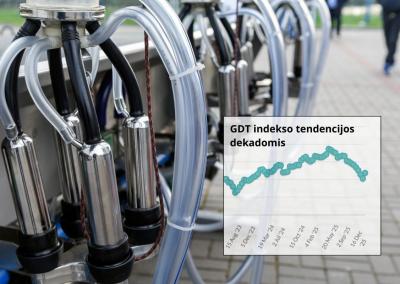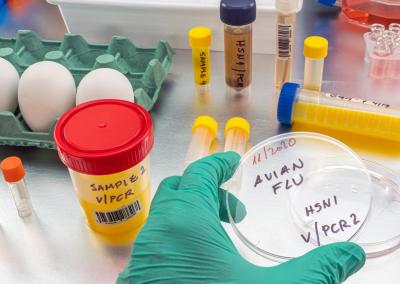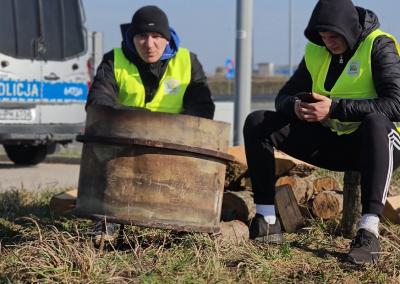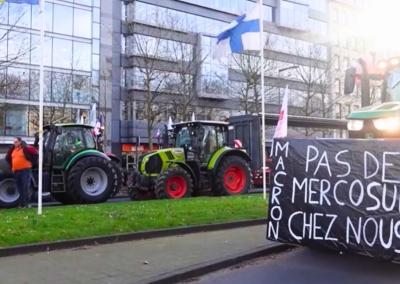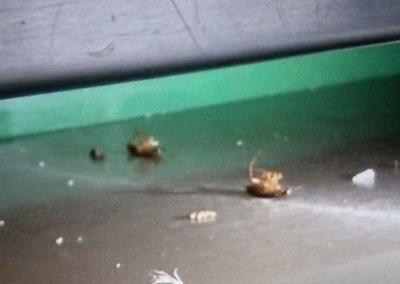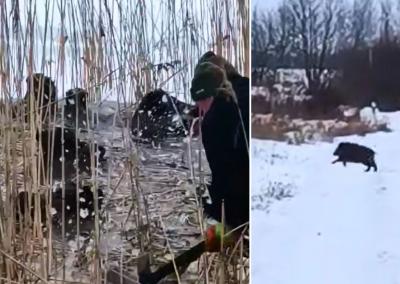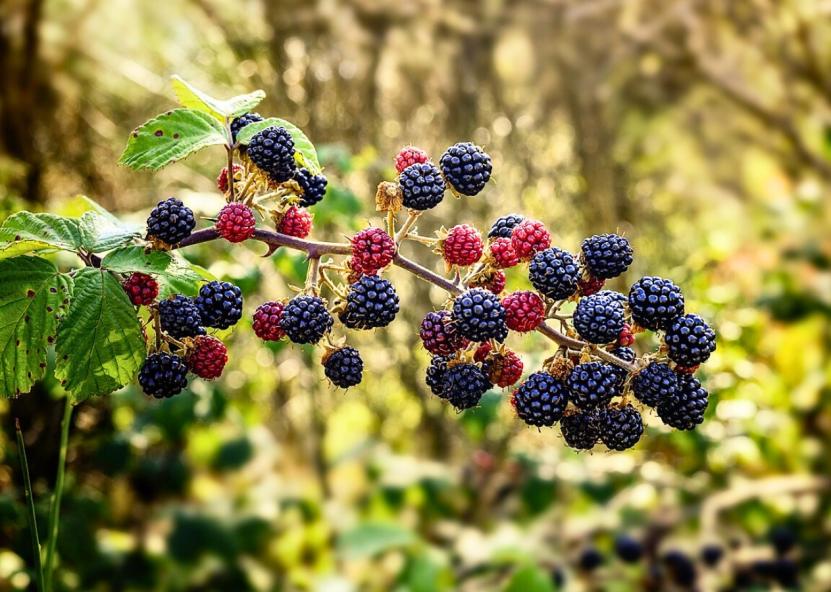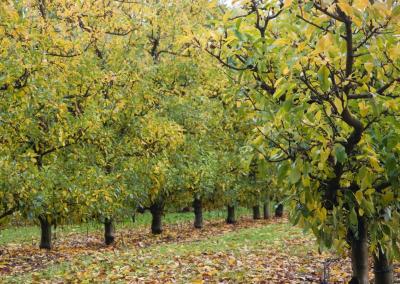Planting blackberries in autumn
Blackberry varieties that are tolerant to frost are best planted in the dormant season, either in autumn or early spring. In autumn, the period from October to mid-November is suitable. It is important that the soil is not too dry. If you decide to plant blackberries in autumn, then you need to have at least 2-4 weeks of reserve time before the first serious frost, which is how long it takes for the seedlings to establish successfully in the new location.
Autumn planting of blackberries has more advantages:• Optimum soil or substrate moisture. After planting, the bush does not need to be watered until the following year – autumn rain and melted snow are sufficient.
• Specimens planted in September-November take root more quickly, develop more vigorously and are less likely to be diseased.
• A wider range of seedlings in nurseries. Fewer good varieties are sold in spring, with more low-quality stocks and leftovers that do not survive the winter well. In autumn there are no such problems with seedlings.
Blackberry growing sites
It is best to choose an open, warm and well-lit site for blackberries. It would be great if the north side of the site is sheltered from cold winds by a shelter or a wall, fence or other large shrubs. But it's worth being aware that raspberries and strawberries are bad neighbours for blackberries.
Gooseberries and currants are considered good compatible neighbours. Blackberries grow healthily in rotation on soil that has previously been used for legumes, carrots, gooseberries, beetroot, cucumbers, patisons, siderates.
Blackberries should not be grown in shade and shade, as they will grow poorly and yield poorly. In such areas, blackberry bushes are often affected by fungal infections such as rust and powdery mildew. It is also better not to plant in low-lying areas, where cold air and excess moisture stagnate.
Soil for blackberries
Active growth and regular yields of blackberries can be observed in well-drained, humusy, fertile soil of medium loam or light texture. You will need to improve the sandy loam with moisture-absorbing loams. Loose, water- and air-permeable soils are very suitable.
Blackberry seedlings should not be planted in carbonate soil. There they will suffer from a lack of magnesium and iron. Groundwater should be at least 1.5 m from the surface. The acidity of the soil for blackberries is pH 5.7–6.5 (neutral or slightly acidic reaction).
You will need to prepare the soil for planting blackberries. Before planting, the soil must be completely cleared of weeds, rubbish and plant residues. Spread a bucket of humus or compost mixed with 15 g of potassium sulphate and 15 g of superphosphate per square metre over the surface of the soil. Once the fertiliser is evenly distributed over the soil surface, you will need to dig down about 25 cm into the soil, incorporating the fertiliser into the soil, and then level the soil by loosening it thoroughly.Preparing the blackberry seedlingsThe ideal option for autumn is a closed-root plant in a container or pot, as it is much hardier and more adaptable. If such seedlings are not available, you can buy planting material with an open root system.
Signs of good roots – free from damage, rot, fungi; fresh, unbroken roots that do not break when bent. Optimum age of the seedling – 1 year. Stems must be at least 0,5 cm in diameter and 1 m long.
Before planting, it is best to soak the blackberry seedlings for a few hours in a solution of any growth stimulant. If the seedlings have a closed root system (in a pot), the growth promoter solution can be added to the potting soil. If you do not have any growth promoters, soak the seedling in plain water warmed to room temperature for at least a few hours.
If the seedling is very long (more than 1 metre), then it is advisable to shorten it to 1 metre in length by making a cut above the top bud. Be sure to apply horticultural ointment to the cut.
Planting holes for blackberry plants
The recommended sizes for blackberry planting holes are 30-40 cm deep and 30-40 cm across. Blackberries do not like their roots to get wet, so drainage (sand, expanded clay) and a deeper hole (40-50 cm) is essential in clay soil. If you are planting a closed-root seedling in a container, you will need to dig a hole 2–3 times bigger than the container.
The spacing between adjacent holes in a row is 1.5-2 m. The spacing between rows is 1-1.5 m. Blackberries are very active shoot growers, so the spacing between their bushes must be sufficient.The planting hole should also be filled with a soil mix: topsoil, humus (or digested manure or compost), sand, peat, superphosphate (30-40 grams) and potassium sulphate (20-30 grams). Mix everything thoroughly and prepare an additional mixture of humus (compost) and garden soil to fill the planted seedling.
Planting blackberries
Plants with an open root system - it is recommended to soak the roots in a clay slurry before direct planting. Seedlings with a closed root system should be watered the day before planting.
It is advisable to plant in moist soil, which means that the soil should be watered with plenty of water beforehand. The best planting depth is when the root collar is at or 2-3 cm below the surface of the soil (5-7 cm is acceptable in light soils).
If the blackberry is too deep or planted too high, it will develop slowly, will not develop root suckers in time, will freeze in winter, and will later die in the heat of summer.
When planting a blackberry plant with an open root system, you should first make a small mound of garden soil and then spread the roots sideways.
After all these steps, fill the seedling with fertile soil (without fertiliser) and make sure to compact the soil around the roots. After planting, the soil should be well compacted. To fill the voids between the roots and the soil, water everything with 2 buckets of water. The circle around the seedling can be mulched with peat, compost, humus or sawdust in a layer of 2 to 3 cm.
Blackberry aftercare
The seedlings should be watered every day for 2 weeks after planting if the weather is dry. The rate is 1 bucket per bush. It is important that the moisture is really absorbed into the soil.
Mulching is necessary if it is not possible to water every day. Mulch will retain moisture in the soil and prevent evaporation. You can use humus or compost, spread in a layer of 5 cm or 6 cm.
If fertiliser was applied at the time of planting, you can do without additional fertiliser this season.


